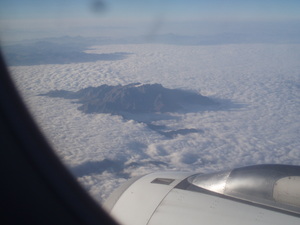The TSA (Transportation Security Agency) continues to adjust and update its rules for Americans who plan international travel. Because of intelligence gathering, continued threats and at least one incident of attempted violence in 2009, some aspects of the rules have been tightened.
For example, following instructions from TSA, airline security inspectors now screen passengers scheduled for international travel more thoroughly by checking detailed personal information, such as full name, passport, credit card information and drivers’ license. The names on all should match exactly, so if you plan international flights, it’s advisable to use your full name … no nickname … when applying for those documents.
This screening process may happen to passengers at least twice: when first entering the overseas flight area of the airport and when going through the security line. Along with ID and passports, passengers must immediately show boarding passes. If they book one-way flights, the investigation process gets much more thorough.
TSA has established strict rules about liquids, gels and aerosols in carry-on bags. There are some allowed, including various types of medication. It is advisable to carry doctors’ prescriptions to show screeners who inspect bottles of pills and liquids. Most are restricted to from three to six ounces. If you have larger bottles or containers, check them with your baggage.
As with most domestic flights before boarding, for overseas air travel you’re required to take off your shoes and outer clothing, as well as emptying your pockets of pens, glasses and all other articles with metal in them, including belts. Put them in the plastic tray for going through x-ray.
To get your cell phone, laptop computer, camera and other electronic articles through security, it may be better that they go into a plastic tray on the moving belt to x-ray, instead of packing them in your carry-on bag. Screeners often decide to inspect those items closely, and if they need to take you aside and open your bag after the x-ray process, it could cause a five- to 15-minute delay. If time is running out for you to get to the boarding gate, this can be frustrating.
On overseas flights, expect delays or worse if you’re carrying anything that could be classified as a totally banned item on an overseas flight. Check the latest TSA listings and, if you have any question about them, just leave them at home.
Don’t carry on your person, in checked bags or carry-ons anything metal, wood or plastic that has a sharp blade and/or point. Don’t have screwdrivers or other hand tools, or anything that could be used as a club. Don’t have anything liquid, powder or plastic that could be explosive and/or flammable.
TSA rules for passengers planning international flights are virtually the same as those for those for air travel within the United States. However, when you go through the tough security screening, as well as the required passport and other paperwork, the process will be much more thorough. You’ll make it less stressful if you’re updated on all the TSA requirements and comply with them.
